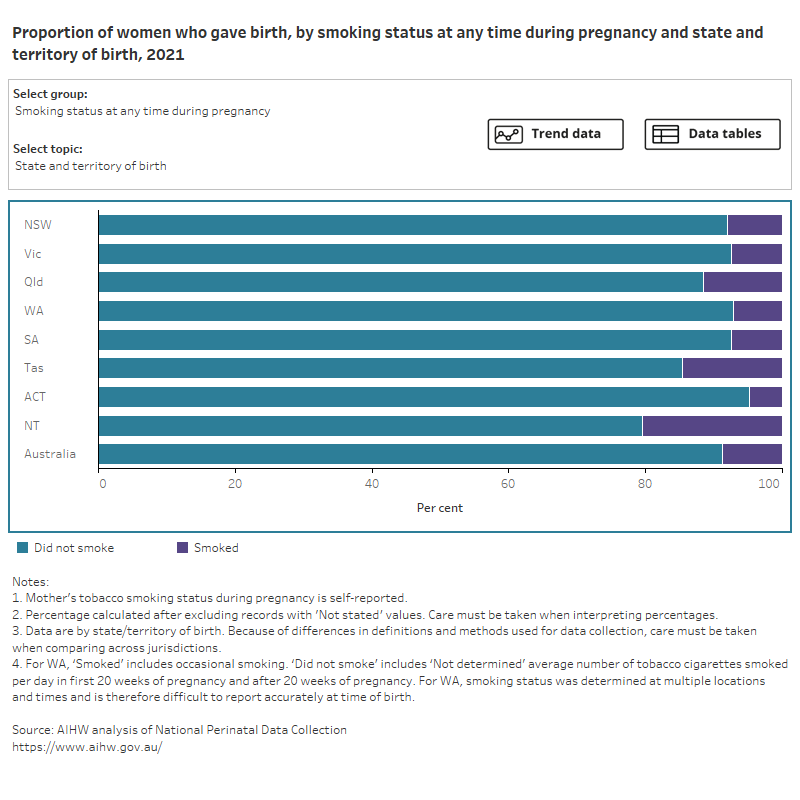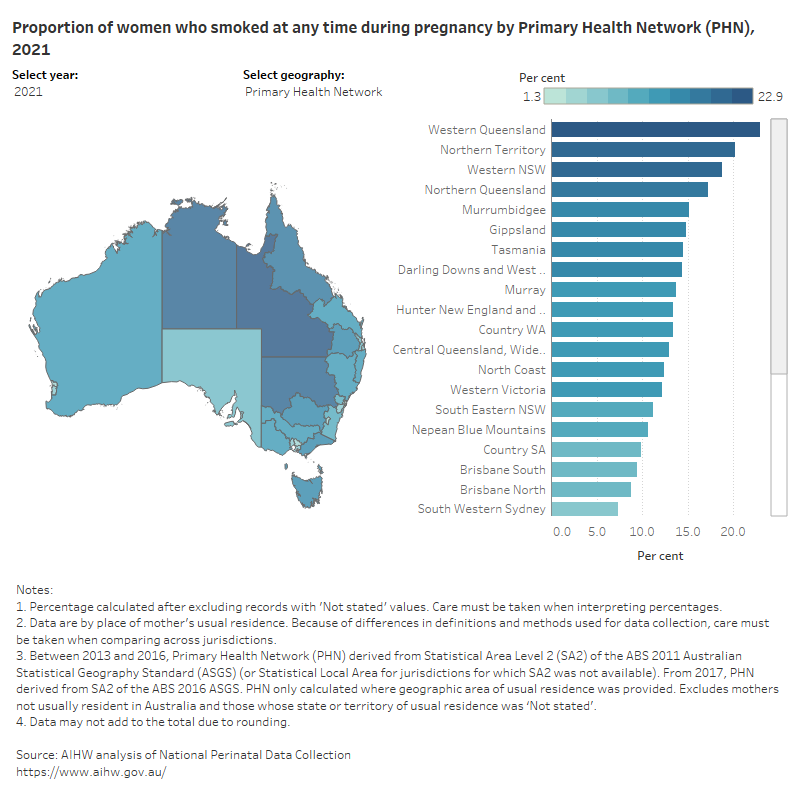Smoking during pregnancy
Smoking during pregnancy is an important preventable risk factor for pregnancy complications. Supporting women to stop smoking during pregnancy can reduce the risk of adverse outcomes for mothers and their babies.
Smoking is associated with poorer perinatal outcomes, including low birthweight, being small for gestational age, pre-term birth and perinatal death.
Support to stop smoking is widely available through antenatal clinics.
In 2021, almost 1 in 10 mothers (8.7%) reported smoking at any time during pregnancy, a rate that has been gradually falling since 2011 (13%). Higher smoking rates were observed among First Nations mothers (42%), teenage mothers (aged under 20) (33%) and mothers aged 20-24 (21%).
Figure 1 presents data on smoking status of women who gave birth at any time during pregnancy, in the first 20 weeks of pregnancy and after 20 weeks of pregnancy, by selected maternal characteristics, for 2021. Select the trend button to see how data has changed over an 11-year period.
Figure 1: Proportion of women who gave birth, by smoking status and selected topic
Bar chart shows smoking status by selected topics and a line graph shows topic trends between 2011 and 2021.

As the number of previous pregnancies increased, so did the proportion of mothers who smoked, with nearly 1 in 3 mothers (31%) who had 4 or more previous pregnancies reporting smoking during pregnancy.
Mothers living in Very remote areas (36%) or in the most disadvantaged areas (17%) also had higher rates of smoking than mothers who lived in Major cities (6.4%) and or the least disadvantaged areas (2.5%). These differences were apparent even after adjusting for maternal age.
Figure 2 presents data on smoking status of women who gave birth at any time during pregnancy, by PHN area and SA3, in 2021.
Figure 2 – Proportion of women who smoked at any time during pregnancy, by selected geography
Map shows proportion of women who gave birth by smoking status and selected geographies and years.

Around 1 in 4 (24%) women who reported smoking during the first 20 weeks of pregnancy did not continue to smoke after 20 weeks.
Some women may smoke before knowing they are pregnant and stop once they find out they are pregnant. According to the 2019 National Drug Strategy Household Survey, around 1 in 5 (22%) women smoked before they knew they were pregnant, and 1 in 10 (11%) smoked after they found out they were pregnant (AIHW 2020).
For related information see National Core Maternity Indicator Smoking during pregnancy.
For more information on smoking during pregnancy see National Perinatal Data Collection annual update data tables 2.14, 2.15 and 2.16.
For more information on smoking during pregnancy by Primary Health Network area and Statistical Area Level 3 see National Perinatal Data Collection annual update data tables 5.3 and 5.9, respectively.
References
AIHW (Australian Institute of Health and Welfare) (2020) National drug strategy household survey 2019, AIHW, Australian Government, accessed 13 April 2021.


